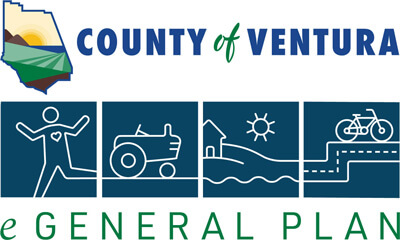One of Ventura County’s distinguishing characteristics is its open space and scenic character. The County is dedicated to directing urban development to cities and existing unincorporated communities to preserve its working and rural landscapes, agricultural lands, scenic vistas, natural resources, and recreational opportunities. The County has a direct role in maintaining agricultural, rural, and open space areas and shaping the character of urban development. At the same time, the County seeks to support and encourage the cities in their land use planning efforts to ensure that a quality living environment is provided for all existing and future county residents. The County has adopted several regulatory measures to guide growth and development in the county, which are described below, as well as in Chapter 8, Agriculture Element. An overview of the annexation history and development trends in Ventura County is located in Section 3.3, “Annexation and Development Trends,” of the Background Report.
Guidelines for Orderly Development
Ventura County’s Guidelines for Orderly Development (Guidelines) are a set of policies that have been adopted by the County, all incorporated cities in the county, and the Ventura Local Agency Formation Commission (LAFCO). The Guidelines intend to: (1) clarify the relationship between the cities and the County with respect to urban planning; (2) facilitate a better understanding regarding development standards and fees; and (3) identify the appropriate governmental agency responsible for making determinations on land use change requests. The Guidelines represent a unique, collaborative commitment to encourage urban development within cities whenever and wherever practical; enhance the regional responsibility of County government; and facilitate orderly planning and development in Ventura County.
The Guidelines were developed into their current form through the key milestones listed below:
- 1967: Several cities and the County began adopting greenbelt agreements.
- 1969: The Guidelines were adopted by the Ventura County Board of Supervisors and LAFCO as a set of policies related to growth and delivery of urban services.
- 1976: The Guidelines were revised and adopted by the County, LAFCO, and all Ventura County incorporated cities except the City of Ojai. Changes to the Guidelines included the establishment of Areas of Influence, which were subsequently renamed Areas of Interest.
- 1983: The Guidelines were revised and readopted by the County, LAFCO, and all incorporated cities in Ventura County. Revisions to the Guidelines included establishment of the Areas of Interest, with one city in each Area of Interest; establishment of Spheres of Influence for each city which identify where annexations could occur; and clarification of land use policies.
- 1995: The Guidelines were revised and readopted by the County, LAFCO, and all incorporated cities in Ventura County. Changes to the Guidelines included defining “urban development” as referring to residential lots less than two acres in area; change in the County’s minimum lot size for the Rural land use designation from one to 2 acres; and clarified land use policies.
Greenbelt Agreements
Greenbelt agreements, also referred to as greenbelts, are voluntary agreements between the County and one or more cities to limit development of agricultural and/or open space areas within the unincorporated county. Greenbelts protect open space and agricultural lands to prevent premature conversion to uses incompatible with agricultural uses. Through greenbelt agreements, cities commit to not annex any property within a greenbelt while the County agrees to restrict development to uses consistent with existing agricultural or open space zoning. There are seven greenbelts in Ventura County covering approximately 164,000 acres collectively.
Save Open Space & Agricultural Resources (SOAR)
Ventura County voters first approved the countywide SOAR initiative in 1998. In general, and subject to certain exceptions, SOAR requires countywide voter approval of any 1) substantive change to the General Plan’s Agricultural, Open Space, or Rural land use goals or policies, and 2) re-designation of land with these General Plan land use designations. In November 2016, Ventura County voters renewed the County’s SOAR initiative and extended its provisions through 2050. Similarly, voters in eight of the county’s ten cities renewed SOAR initiatives adopted by the respective jurisdictions which are applicable within their boundaries. The County SOAR initiative’s Agricultural, Open Space and Rural goals and policies are included in this General Plan with only technical, non- substantive revisions for clarification and internal consistency with the rest of the General Plan.
